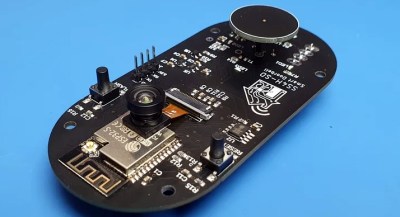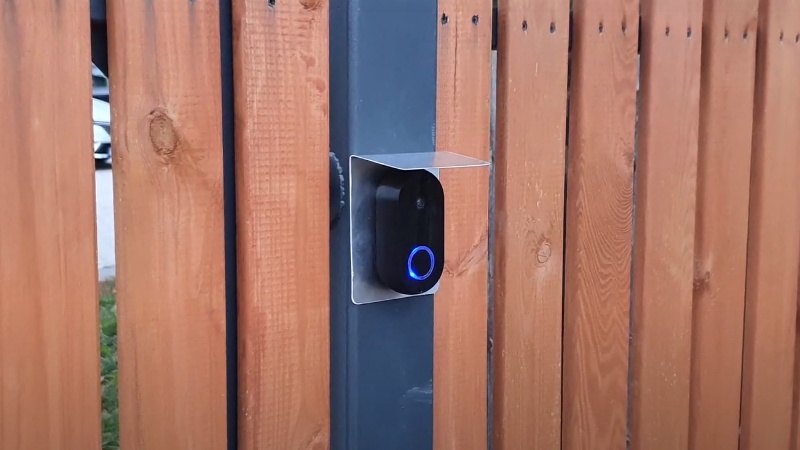There’s no question that being able to see who’s at your front door from your computer or mobile device is convenient, which is why the market is currently flooded with video doorbells. Unfortunately, it’s not always clear who else has access to the images these devices capture. Organizations such as the Electronic Frontier Foundation have argued that by installing one of these Internet-connected cameras on their front door, consumers are unwittingly contributing to a mass surveillance system that could easily be turned against them.
Luckily, there’s a solution. As [Sebastian] shows in his latest project, you can build your own video doorbell that replicates the features of the commercial offerings while ensuring you’re the only one who has access to the data by leveraging open source, community developed projects such as ESPHome and Home Assistant. At the same time, modern manufacturing techniques like desktop 3D printing and low-cost PCB fabrication mean your DIY doorbell doesn’t have to look like you made it yourself.
 The project starts with a custom PCB that combines the ESP32, a camera module, a capacitive touch sensor, a relay to optionally trigger an electronic door lock, and a DC-DC converter that will let you power the device from a wide range of input voltages. The board even has a spot where you can solder on an additional 8 MB of external PSRAM for the ESP32, which will enable the chip to capture higher resolution video.
The project starts with a custom PCB that combines the ESP32, a camera module, a capacitive touch sensor, a relay to optionally trigger an electronic door lock, and a DC-DC converter that will let you power the device from a wide range of input voltages. The board even has a spot where you can solder on an additional 8 MB of external PSRAM for the ESP32, which will enable the chip to capture higher resolution video.
The electronics are housed in a minimalistic 3D printed enclosure that would fit right in alongside similar gadgets from the likes of Ring and Arlo; especially if you have access to a CNC and can cut the front panel out of acrylic. The lighted touch sensor looks phenomenal, and really gives the device a professional feel. That said, it doesn’t look like the case would last very long if exposed to harsh weather and there are some obvious physical security issues with this approach. But to be fair, we’ve seen the same problem with commercial hardware.
Naturally with a project like this, the hardware is only half of the story. It takes a considerable amount of software poking and prodding to get things like mobile device notifications working, and as a special added annoyance, the process is different depending on which MegaCorp produced the OS your gadget is running. [Sebastian] has documented the bulk of the process in the video after the break, but the finer points will likely need some adjustment depending on how you want to set things up.
This is an exceptionally impressive project for sure, but if the whole slick futuristic look isn’t your style, you could always opt to go with the DIY video door bell that looks like it came from an alternate reality version of 1986.















Nice project!
But I think “a relay to optionally trigger an electronic door lock” should not be placed on the outside of the door.
Yep, safer to send some encrypted message to another board located inside behind the door that after verifying the unlock request then triggers the relay and lock solenoid.
Absolutely. Keep sensitive electronics (&software) in secure areas. Ideally, you would keep the relay quite a way inside the ‘safe’ area, or make it ‘explosion proof’.
This! Just putting it there may lead someone to do something stupid.
A relay to turn on a light for nighttime use however, would be handy.
Good thing this is directly referenced in this post, then.
Take it a step further, also have a relay outside of the door that does something other than unlock the door like turn on a light. That way, you’ll have a false target for hackers. Make it switch the full mains voltage and that unsuspecting hacker might be in for a shocking surprise.
This is where everyone fails… the relay shouldn’t even be part of the doorbell… it should have its own transmitter on the inside of the perimeter!
Super super rad. Would be a piece of cake to trigger a relay from HA. We did pretty much exactly that with our roller door at work. No direct link from our bell (unifi g4 doorbell). Only thing we struggle with a bit is delayed notifications to our phones.
“Would be a piece of cake to trigger a relay from HA”
And open the trap door under the Welcome mat.
Ren, you are hilarious and I love reading your comments. Please never change.
B^)
If you get a ip camera with two way audio and input trigger, it is pretty simple to wire it to go off with your existing doorbell. It’ll email you if the doorbell is rung, and you can speak to whoever is at the door. You’ll have a host of other advanced features that come with an ip camera these days. This doesn’t get over the Big Brother issue, but you probably should have more to fear from your smartphone/car than your security cameras.
>email
Why not send a carrier pigeon?
Why not IPoAC (RFC 1149)?
My take on this, I got a Poe IP camera and a cheap wireless doorbell, gutted them, put them in a case for a no name camera doorbell, and set zomeninder (which already runs the CCTV at the premises) to record footage and monitor alerts. This is accessable to a Linux novice with a hot glue gun like me.
A Poe IP camera?
Quoth the doorbell: DONG
An RFID reader would be very cool to add and pretty simple. As it is the ESP32 supports BlueTooth so you can and that to your cell phone to to use it as a key. Very nice build overall
Box: I’m nice and friendly and rounded, come press my buttons ~nyaa! :)
Metal shroud: Look at me wrong, I’ll cut you up broh!